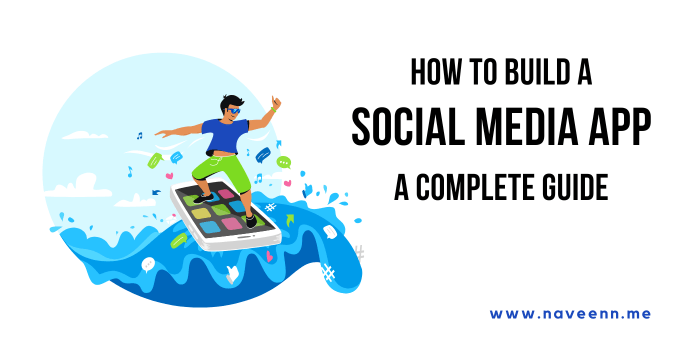In today’s digital age, social media apps have become integral to our lives, influencing the way we communicate, share, and connect with the world. From Facebook and Instagram to LinkedIn and Twitter, the possibilities for creativity and innovation are endless.
If you’re considering building a social media app, this guide will walk you through the process, from ideation to launch, ensuring you create a compelling and user-friendly platform.
Understanding the Basics of Social Media App Development
Before diving into the technical aspects of app development, it’s important to grasp the basics of what makes a successful social media app.
- Define Your Target Audience and Purpose: The first step is to define the purpose of your social media app. Are you creating a platform for professional networking, sharing photos, or fostering community discussions? Identifying your target audience will help you tailor your app’s features and design to meet their needs.
- Conduct Market Research: Analyze existing social media platforms to identify gaps and opportunities. Understand what features are popular and what users find lacking in current apps. This information will help you refine your app idea and differentiate your platform from competitors.
Key Features of a Social Media App
To attract and retain users, your social media app should include essential features that enhance user engagement and provide a seamless experience.
- User Profiles and Authentication: Allow users to create profiles, customize their information, and upload profile pictures. Incorporating secure authentication methods, such as email verification and social media log in, ensures a safe and convenient registration process.
- News Feed and Content Sharing: A dynamic news feed is crucial for any social media app. Enable users to share text, images, videos, and links. Implement algorithms to personalize the news feed based on user preferences, interests, and interactions.
- Messaging and Notifications: Real-time messaging and push notifications keep users engaged and informed about updates, likes, comments, and messages. This feature fosters communication and interaction among users.
- Search and Discovery: Provide a robust search functionality that allows users to find friends, groups, content, and topics of interest. Incorporating trending topics, hashtags, and user recommendations enhances the discovery experience.
- Privacy and Security Settings: Offer users control over their privacy settings, including options to make their profiles public or private, block users, and report inappropriate content. Ensuring data protection and security builds user trust and loyalty.
Steps to Build a Social Media App
Now that you have a clear understanding of the essential features, let’s explore the step-by-step process of building your social media app.
Plan Your App’s Features and Design
Start by outlining the core features and functionality of your app. Design wireframes and mockups to showcase the user interface and enhance the user experience. Collaborate with designers to develop an intuitive and aesthetically pleasing design that aligns with your brand identity.
Choose the Right Technology Stack
The performance and scalability of your app greatly depend on selecting the right technology stack. Here are some popular choices:
- Frontend Technologies: HTML, CSS, JavaScript, React Native, Flutter
- Backend Technologies: Node.js, Ruby on Rails, Django
- Databases: MySQL, MongoDB, PostgreSQL
- Cloud Services: AWS, Google Cloud, Microsoft Azure
Consider factors such as your team’s expertise, project requirements, and scalability needs when choosing the technology stack.
Develop the Minimum Viable Product (MVP)
Building an MVP allows you to test your app’s core features with a limited audience before the full-scale launch. Focus on the most critical functionalities, gather user feedback, and make necessary improvements. This iterative process helps in minimizing risks and optimizing the app’s performance.
Implement Advanced Features
Once the MVP is validated, you can start implementing advanced features such as:
- Artificial Intelligence and Machine Learning: Enhance user experience by integrating AI-driven content recommendations, chatbots, and image recognition.
- Augmented Reality (AR): Offer unique features like AR filters and effects for photos and videos.
- Gamification: Incorporate elements such as badges, rewards, and leaderboards to increase user engagement and retention.
Test and Refine
Thorough testing is essential to ensure the functionality, security, and usability of your app. Execute different testing phases, including unit, integration, and user acceptance testing. Address and resolve any bugs or issues before launching.
Launch and Market Your App
Prepare for a successful launch by planning a comprehensive marketing strategy. Utilize social media marketing, influencer collaborations, email marketing, and content marketing to create buzz and attract users. Monitor user feedback and analytics to identify areas for improvement and make data-driven decisions.
Conclusion
Building a successful social media app requires careful planning, strategic development, and continuous innovation. By focusing on user-centric features, robust technology, and effective marketing, you can create a platform that not only meets the needs of your target audience but also stands out in a competitive market.
